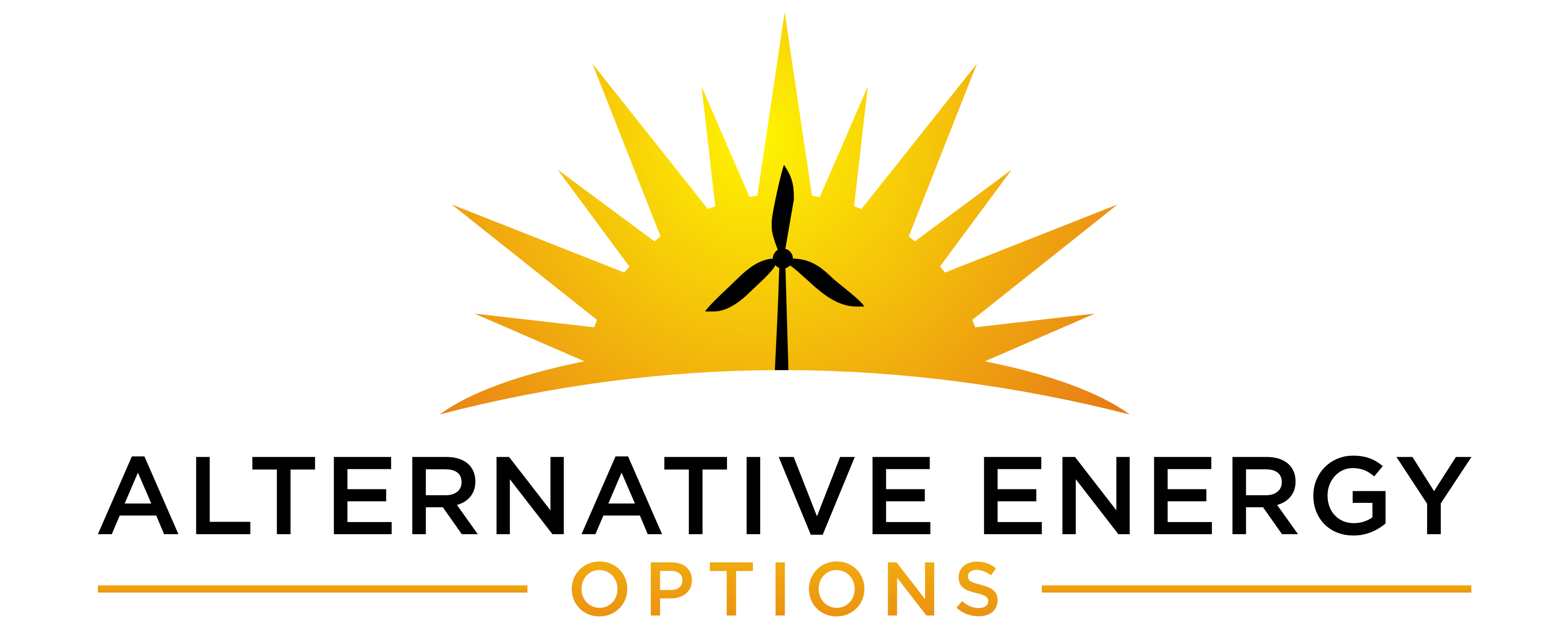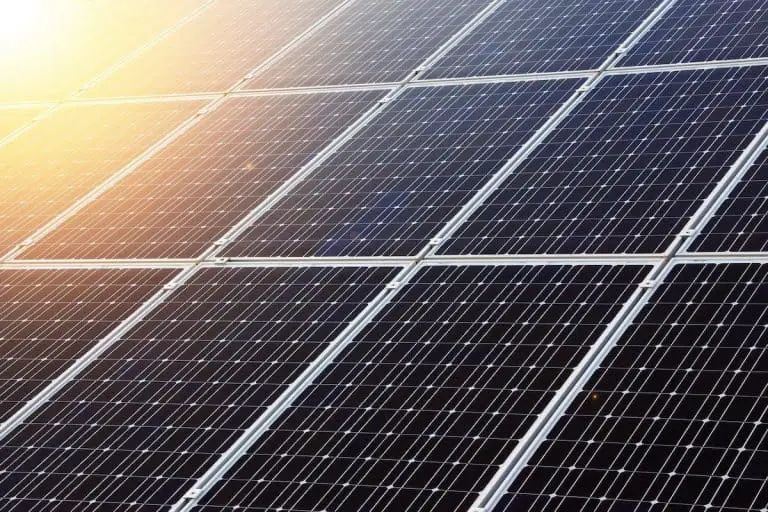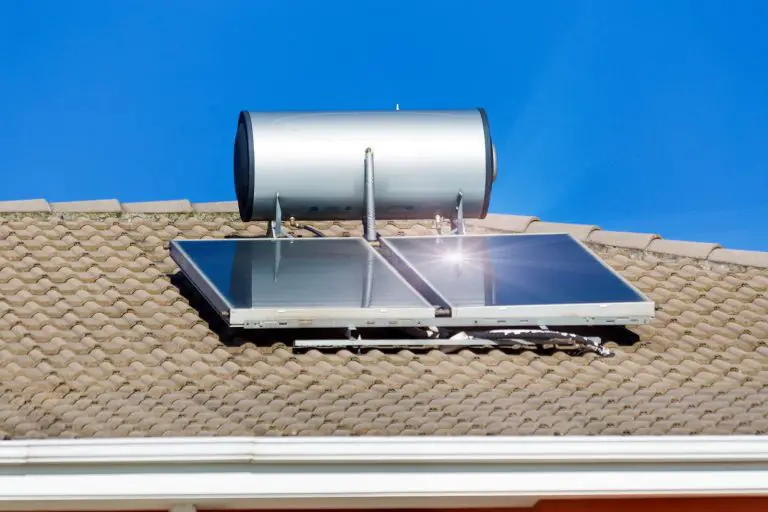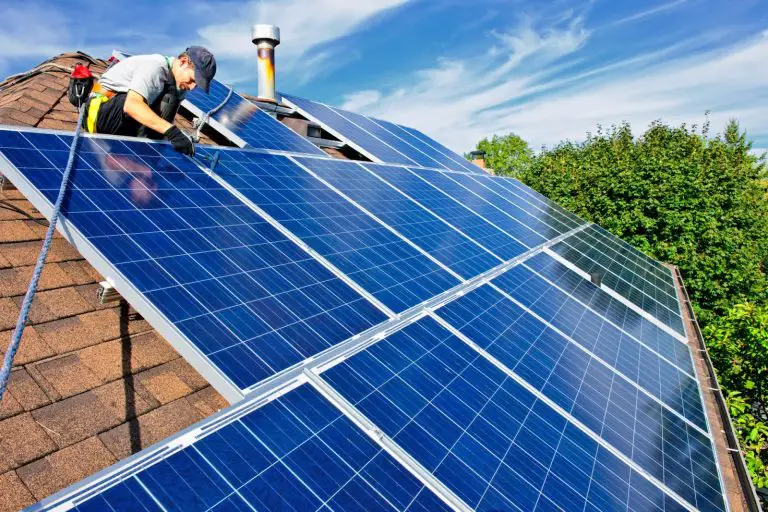How Solar Generators Work: Everything You Need to Know
Solar power is a renewable energy source and is now readily available. However, to access this type of energy and efficiently apply it to various electrical products, one must have a solar generator in good working condition. Keep on reading as this article highlights how solar generators work and why you should essentially consider having them!
Solar Generators’ Function
Solar generators have components that allow them to absorb sunlight and produce energy that can power various electrical products. Additionally, there are multiple considerations to ensure they work correctly and efficiently.
What Is A Solar Generator?
A solar generator is a system functioning from solar power. It uses solar panels to absorb solar energy and stores the power in a battery that you can conveniently use later.
Hence, solar generators have diverse functions, such as using them in boats, recreational vehicles (RVs), and backup power.
How Does A Solar Generator Work?
As mentioned, a solar generator is a functioning system consisting of components. The system consists of a solar panel, controller, battery, and inverter.
Solar Panels
The solar panels serve as the power source of the generator. It collects clean, renewable energy by absorbing sunlight and converting that light into electrical power. One can then utilize the electrical power produced to provide electrical loads.
Solar panels consist of numerous individual solar cells composed of silicon, phosphorus (i.e., provides negative charge), and boron (i.e., gives off positive charge), which collectively have semiconductor properties. Consequently, solar panels can already conduct the process known as the Photovoltaic Effect.
Specifically, photons from the sunlight are acquired, which initiates an electric current. The energy byproduct from photons hitting the solar panel surface enables electrons to be knocked out of their atomic orbits and executed into the electric field created by the solar cells inducing the free electrons into a directional current.
For example, you can commonly observe solar panels deployed on home rooftops with the best sunlight exposure. There is enough space to produce solar power to supply home appliances and other electrical products which go into the main power grid, thereby compensating for electricity use during the night.
However, off-grid applications of solar panels need the charge controller, battery bank, and inverter. Several examples of off-grid applications include:
- Electrical sources for remote campsites
- Recreational vehicles (RVs)
- Remote cabins
- Family homes
- Boats
Solar Charge Controller
The process of correctly storing power from solar panels is through the charge controller function. Specifically, it regulates the amount of charge entering and exiting the battery bank.
Regarding safety, the controller ensures preventive measures that the battery bank/s might encounter. For example, overcharging, prevention of Undervoltage, and leaking back of power to the solar panel at night.
Solar Battery
The primary function of the battery is to store energy simply. It does not perform any transformation or modification to the electrical power acquired from the solar panel/s.
Specifically, whenever electricity is no longer available, the stored energy in the battery is used to supply various electrical products with the aid of both the controller and inverter components.
Additionally, there are various solar batteries, but current solar generators already have built-in batteries and are usually not upgradeable. Nevertheless, if you intend to modify your solar generator, the following sections can aid you in determining which type best suits your intent.
Best Battery For A Solar Generator?
Solar battery types have their corresponding pros and cons. However, the Lithium-ion type is the most commonly used battery for solar generators. See more information in the table below when a Lithium-ion battery is compared with other solar battery types.
| Battery type | Advantages | Disadvantages |
| Lithium-ion | Longer life span (range from 3,000 to 5,000 cycles) Better efficient power usageMaintenance freeHigher storage capacityFree of gas emissionSmall in size and lightSignificant in cordless power (e.g., cordless air compressors and cordless impact wrenches) | Most costly relative to other battery types indicated here |
| Gel | DurableMaintenance freeBetter resistance to vibrations and shockPerform well in both cold and hot temperaturesLong life-cyclesLess prone to leakage if ever damaged | VentlessSelf-discharge faster than flooded lead-acid batteriesLimited charging profilesProne to damage when charged incorrectly Low ample amp-hour capacity Low charging voltageProne to accidental overchargeCostly than flood lead-acid batteries |
| Absorbent glass mat (AGM) | Lower internal resistance than flood lead-acid batteriesLasts on higher temperatures more than rest of the battery typesResistant to cold temperaturesLightweightSlow discharge than rest of the batterya typesLeak-proofNeed little to no ventilationCan preserve static charge for long period of timeLonger lifespan than flood-lead acid batteries | Use of similar charging voltageOften more suited for solar electricity systems |
| Flooded lead-acid | Low cost purchaseRecyclable | Gas byproductsRequire ventilationBulkyCorrosiveRequire regular maintenance check (e.g., addition of water every 1-3 months)Should be stored upright to avoid leakage |
Inverter
The inverter serves as the energy converter component. Specifically, the direct current (DC) stored in the batteries is converted into an alternate current (AC). The AC usually supports home appliances and electrical products. Using the DC directly into homes can potentially fire most of the appliances.
Appliances At Risk When Plugged Into A DC
- Computers
- Power strips
- Televisions
- Entertainment systems
- Home security products
It is imperative to have an inverter to ensure safety using electrical power sourced from solar generators.
As with solar batteries, inverters have various types and corresponding pros and cons.
Moreover, solar generators tend to have built-in inverters as well. Nevertheless, the table below might help you select a suitable inverter according to your preference.
| Solar inverter type | Advantages | Disadvantages |
| Standard string inverters | Cheap to purchaseEasy to quick-fix problemsLow-cost installationEasily maintainedSuitable for smaller solar generator systems | Limited power production of solar generator systems with complex design (e.g., shading exposure, roof set-up) May reduce overall power production of entire solar generator system when a single panel has low production (e.g., exposure to shade) |
| Optimized string inverters | Continuous power generation with no drop in energy unlike from standard string invertersHelp to optimize power production in complex solar generator system designsAllows solar panel unit (i.e., individual) monitoring from entire solar generator system on power production dataExtended warranty benefits | Costly than standard string invertersLabor may be excluded on warrantyPower optimizers may be unrepairable due to installation and assembly in factories |
| Micro inverters | Optimisation of energy conversion at solar panel unit scaleSuitable for complex solar generator system designsAllows solar panel unit (i.e., individual) monitoring from entire solar generator system on power production dataAllow power generation to be at maximum when exposed to shadingContinuous power production with no drop in energy unlike from standard string invertersExtended warranty benefits | Costly than standard and optimized string invertersChallenging to access for repairs as these are installed per solar panel unit |
| Hybrid inverter system | Programmable intelligent devices according to energy availability (e.g., draw power directly from the grid when available energy is cheapest or utilize stored energy when available energy from the grid is most costly)Can be used with or without a battery backup systemSuitable for complex solar generator system design and expansion | May reduce power efficiency relative to dedicated invertersLimited solar generator system design when compared to micro inverters |
Is A Solar Generator Good?
Solar generators are ideal due to many advantages in different long-term aspects. However, some disadvantages must be considered, especially when limited financial freedom.
The following sections consist of the pros and cons of having solar generators, which can help you decide whether to have one or not.
Advantages
Free Energy
Solar generators give you access to free energy. The accessibility to such energy provides you with the following benefits:
- Less inconvenient than fuel generators – The addition of fuel is necessary for fuel/gas generators to ensure their function. Unlike solar generators, you only need to ensure sunlight exposure.
- Low-cost overall – As fuel is no longer necessary for solar generators, the financial savings taken over time will be essential.
- Anytime usage – This generator can be used anytime, provided enough power is stored and the entire system’s correct orientation.
Low Maintenance
Solar generators require less maintenance than fuel/gas generators. The latter tend to require more care due to moving engine components functioning as a whole and simultaneously need to be correctly lubricated. Unlike solar generators, the moving parts only consist of cooling fans.
Solar generators require no oil changes as they are only composed of cooling fans. Furthermore, there is not much need to worry about buying spare components for cooling fans whenever a part is broken.
Quiet Operation
Solar generators’ inverters and cooling fans are the only components that generate a sound when functioning. Interestingly, you may use the system comfortably while indoors with no noise discomfort.
Additionally, the quiet operation of solar generators is also convenient in the following scenarios:
- At night: You can comfortably sleep during the night even when solar generators are switched on.
- During camping: The system can be beneficial as an electrical power source and does not disturb campers with its noise.
- During special gatherings: As a backup power, solar generators can serve for special occasions without noise disturbance in the event of a blackout.
Portability
A significant advantage of solar generators is the capacity to be portable. Numerous types of solar generators are lightweight that can be easily transferred from one location to another. However, portable solar generators vary in size and power output. Typically, bigger sizes tend to have higher electrical work.
Here are some places where you can conveniently bring portable solar power generators:
- Off-grid cabin – A portable solar generator can power cabins without access to the electrical grid to supply power to appliances and gadgets.
- Camping or RVs – The system can be beneficial during camping, especially in areas without electricity. It can power lights, portable heaters, electric stoves, etc.
- Car – Portable solar generators could conveniently serve emergency purposes and charge power for a car if it stops working.
Disadvantages
Initial Purchase
The initial costs when purchasing solar generators vary but correspond to your purpose of use and preference. Additionally, the manufacturer’s brand also affects the pricing. However, the costs of purchasing high-powered solar generators are expensive.
Typically, the cheapest portable solar generators could cost you around $200 and has an output wattage of 200 watts (W).
However, this price only costs the generator component, and other essential parts such as the solar panel/s are not yet included. Furthermore, this type of solar generator could only accommodate the following devices:
- Light
- Tablet
- Phone
- Laptop
Supporting Larger Appliances
Portable solar generators with 2,000W output could cost more than USD 2,500. The cost usually comes in with the generator plus the essential components. Furthermore, it could already support bigger appliances such as
- Refrigerator (i.e., 15-28 hours)
- Microwave (i.e., more than 2 hours)
- Blender (i.e., 1.5-2 hours)
- Hair dryer (i.e., more than 1 hour)
Solar generators more than 2,000W plus their essential components (e.g., higher number and quality output of solar panels required) would cost you a lot more.
Rechargeability
Contemporary solar generators, which typically have built-in batteries, need to be recharged upon consumption of power storage. Charging could take quite some time depending on the following factors:
- Daily use of power
- Sunlight availability
- The habit of using the generator while charging
- The maximum input of a solar panel
- Battery size
Thing To Do To Alleviate The Solar Generator’s Charging Time
- Proper setup of solar panels – Ensure to orient your solar panels where it can maximize sunlight exposure.
- Utilize charging from the grid – Solar generators come with a wall charger. Plug this in to use power from the electrical grid for faster charging.
- Ensure maximum solar output – Proper proportioning of your solar panel setup would result in the fastest possible charging duration.
Temperature Sensitivity
Batteries on solar generators are still prone to high temperatures (usually beyond 40℃), which can hinder the operation and cause equipment damage. For example, temperatures during the summer can initiate a temporary shutdown of solar generators.
Therefore, it is advisable to check while in use regularly or to place in a cool/shaded area as it will allow the cooling fans to work efficiently and prevent the batteries from overheating.
Power Demand
Solar generators differ in small, medium, and large sizes, so the latter require higher power storage and greater power output. If you intend to supply numerous home appliances, the best choice would be the large-sized solar generators. However, this would pertain to higher costs.
On the other hand, the charging time also differs as it corresponds to their sizes. The large-sized generators require more time for charging versus the smaller-sized ones. Hence, small to medium size generators are more practical when camping and other outdoor-related activities requiring electrical power.
Energy Supply Consistency
Sunlight availability would greatly depend on the weather. Shaded weather conditions tend to affect solar generators’ energy supply and efficiency. Hence, it might be best to carefully consider investing in costly solar power generator/s when you are based in often densely cloudy places.
Nevertheless, solar generators can still function during dense cloudy days, rainy days, and even snowy weather, yet they are not as perfect when exposed to a sunny climate.
Solar Generator Types
There are two kinds of solar generators:
- Solar backup generators
- Portable solar generators
Solar Backup Generators
This type of solar generator ideally functions as an emergency backup in the event of a power blackout. It has a high-wattage capability and multiple batteries to maximize power usage.
Additionally, they power most of the essential appliances at home that are typically small to mid-range in size (e.g., TVs, lights, phones, computers, refrigerators, etc.). Consequently, they feature multiple AC outlets.
Buy high-wattage solar panels for a solar backup generator. It could take less than two days to fully charge the generator, provided it has exposure to favorable sunny weather.
However, a disadvantage of this type of solar generator is its weight. Due to the generator’s high power wattage capacity is heavy, and relocating it would prove difficult. Additionally, the generator would also be expensive.
Portable Solar Generators
As the name indicates, this generator is readily movable for convenience. An obvious feature would be that this type is lighter than its backup counterparts. Yet, they can potentially serve as small backup generators too.
Portable solar generators have a low-wattage capacity, and their power supply is limited to small and few appliances. Additionally, portable generators might take a while to recharge if you utilize low-wattage solar panels. This type of generator would not be suitable for heavy power users.
Heavy Power Usage
For heavy power users, it is imperative to understand how fast and efficient a generator can charge. Reviewing the portable generator’s battery capacity and charge capacity is significant.
For example, the generator would not be fully charged if you have a 150W charging capacity versus a 1,000W battery load and could only allocate 5 hours of charging time during the day. Specifically, the computation goes as
- 150W charging capacity x 5 hours = 750W for the day
Hence, charging time is crucial in ensuring a fully loaded portable solar generator.
Solar Generator Kits
As there are different components comprising a solar generator system, the solar panels, charge controllers, and generator (i.e., built-in battery and inverter) are often sold separately. It is imperative to look for compatible components to ensure a fully functional and reliable generator system.
For example, setting up solar generator components may lead to expensive mistakes such as incorrect wiring of components. Specifically, connecting the wrong wires when establishing a do-it-yourself (DIY) Lithium solar generator can result in total battery loss, which costs hundreds of USD.
Why Is It Best To Buy Generator Kits?
It is best to purchase solar generator kits. The components of solar generator kits usually come from a single manufacturer, ensuring component compatibility. Specifically, you have the right solar panels and charge controller for your generator.
Alternatively, there are solar generator kit components sourced from different manufacturers. However, this tends to ensure higher quality component/s for your solar generator system, thereby having better performance function.
Consequently, purchasing solar generator kits means you no longer have to worry about battery damage and overcharge.
Additional Factors To Consider In Selecting The Best Solar Generator
To maximize the use of a solar generator based on your preference and intent, there are other factors to consider.
Battery Capacity
The storage capacity of your battery or batteries must be carefully considered, especially for your intent of use. Higher storage capacity supports numerous appliances and longer use of devices. Lower storage capacity pertains to a more restricted number of appliances and shorter duration usage.
Inverter Rating
Similarly, a lower inverter rating of a solar generator could not support high-wattage devices and appliances. Ensure to have an inverter rating that is compatible with the intended devices and appliances to be used.
Portability
Several solar generators are designed to be more portable than other types. Hence, if you prefer to have convenient solar generators to move around, it is advisable to select generators consisting of wheels and handles that can be easier to move.
Can A Solar Generator Power A House?
A single, small, to a large-sized solar generator is not enough to consistently power an entire home and all its appliances. However, generators and their battery components hold more capability with each new design innovation, enabling them to provide significantly higher charges.
Perhaps in the not-so-distant future, a solar generator may already be capable of powering an entire home. Interestingly, there are now available off-grid solar systems that can power a mid-size home or farm/ranch. However, the costs are very high (i.e., more than $37,000), and the system design is more complex.
Summary
Solar generators provide you access to free energy due to sunlight availability. They are an excellent alternative to fuel/gas generators due to less maintenance and reduced long-term costs.
The solar panel/s, charge controller, battery, and inverter are essential to ensure a solar generator’s proper and efficient functioning. Additionally, purchasing a solar generator has pros and cons, but owning one would prove very beneficial in the long run.
To maximize the use of solar generators, you should look into which type and component specifications to ensure they will meet your needs and intent of power usag







